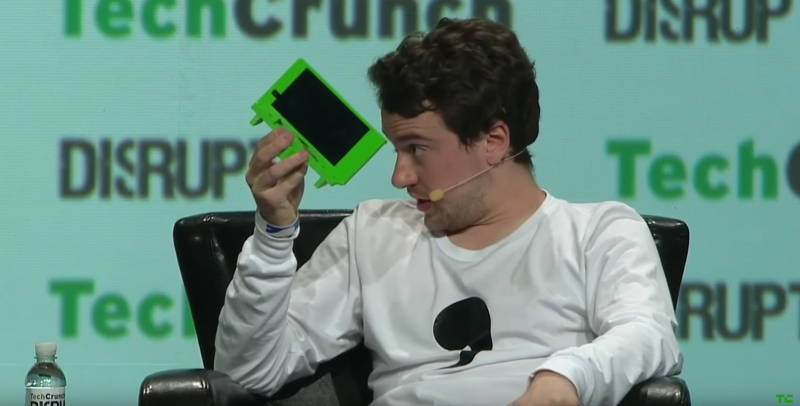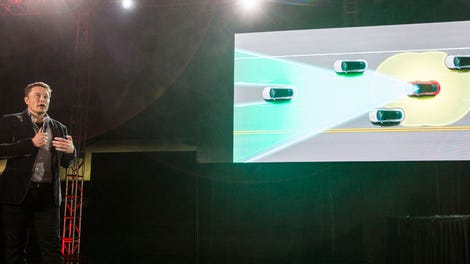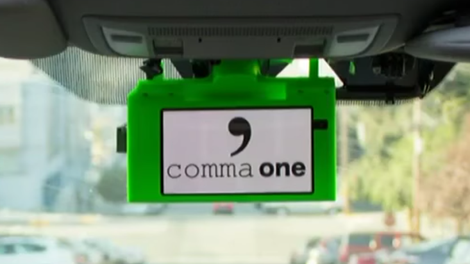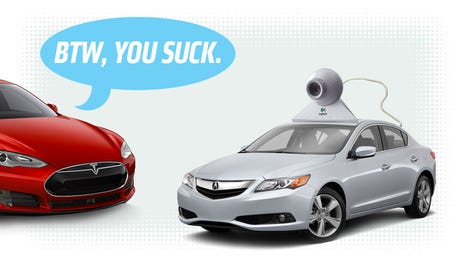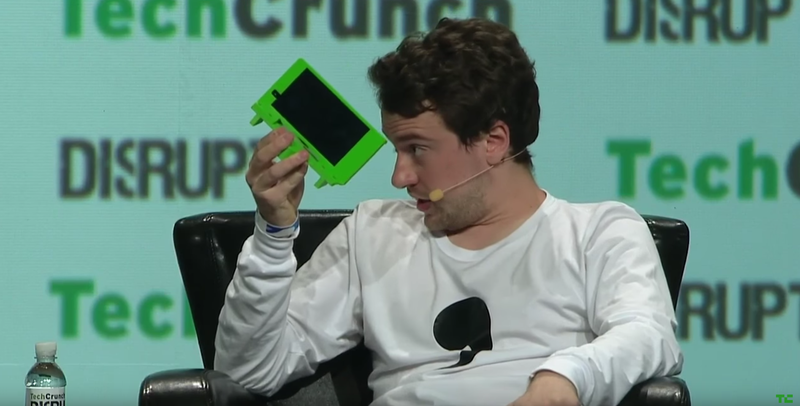
Famed hacker George Hotz pulled the plug on his Comma One autonomous car project today after the National Highway Traffic Safety Administration wrote him a letter asking to learn more about it. He said that there was a better use for his time than dealing with rules. But you know what? The NHTSA was completely within its rights to be asking Comma.ai the questions that it did.
Hotz’s Comma One was a device that, in its earliest stages, attached to certain Honda and Acura ILX models with lane keeping assist systems and built-in front radars and only in the Bay Area. It showed some promise on how normal cars could be retrofitted to be semi-autonomous ones.
Advertisement
Advertisement
But it still raised questions. In a call back in September, Hotz assured me that the company took safety very seriously. He said that the Comma One limits how quickly the kit turns the steering wheel so that the instant the car seems like it’s going in a direction that’s unfavorable to the driver, he or she can just lightly steer it back to the desired path. There will be very little resistance in the wheel.
Hotz also said that the autonomous steering moves the wheel so slowly that the drive has ample time to correct it if need be. Basically, people didn’t need to be afraid that the car in autonomous mode will suddenly jerk the wheel and crash into a wall.
After all, Hotz never claimed the Comma One to give the car full autonomy. He likened it to a “fancy cruise control” system. From a company blog post on October 20:
Sponsored
The comma one will not turn your car into an autonomous vehicle. It is an advanced driver assistance system. To put it in traditional auto manufacturer terms, it is “lane keep assist” and “adaptive cruise control”
With all these Tesla autopilot like systems, it is very important that you pay attention. This system does not remove any of the driver’s responsibilities from the task of driving. We provide two safety guarantees:
1. Enforced disengagements. Step on either pedal or press the cancel button to retake full manual control of the car immediately.
2. Actuation limits. While the system is engaged, the actuators are constrained to operate within reasonable limits; the same limits used by the stock system on the Honda.
NHTSA, citing the same blog post, had some questions of its own. In the letter to Hotz, dated yesterday, the safety regulator very reasonably asked Hotz to deliver answers to 15 questions:
Advertisement
- How the Comma One is installed in a vehicle and to provide the installation instructions.
- Describe the advanced driver assistance features of the Comma One, including how they’re different from the existing features in the cars in which the Comma One will be installed.
- How a driver would use the Comma One and to provide a user manual.
- Describe the conditions under which Comma.ai believes that a car equipped with the Comma One would be able to safely operate. Examples include types of roads, geographic area, speed, traffic conditions, environmental conditions and amount and type of necessary driver input.
- Provide a detailed description of any testing or analysis that supports the answers found in Question Four.
- Describe the steps that Comma.ai has taken or will take to ensure the safe operation of a car with the Comma One, including how the automated shutoff works and how owners will be educated.
- Provide a list of the cars that Comma.ai supports or will support with the Comma One. Include make, model and year.
- Detail the steps that Comma.ai has taken to make sure that installing the Comma One didn’t have unintended consequences on the car’s operation.
- What would happen if the Comma One was installed in an unsupported car?
- Has Comma.ai done any analysis or testing of the effects that the Comma One would have with the car’s compliance with the Federal Motor Vehicle Safety Standards? If so, provide the analysis. If not, describe why not.
- How does the Comma One impact a car’s rearview mirror?
- What is Comma.ai’s position on how the Comma One does or does not affect a car’s FMVSS rearview mirror requirements?
- State the date that Comma.ai plans to start selling the Comma One. Provide a list of all retailers and websites that Comma.ai expects to sell the Comma One.
- State the date that the Comma One will start shipping.
- Provide any other information that Comma.ai thinks supports the safety of the Comma One.
As you can see, most of the inquiries on that list concern safety and what Comma.ai did so that it felt confident enough to begin marketing its product to the public. The NHTSA was asking for clarification and transparency from Comma.ai. Those requests are all pretty reasonable.
Advertisement
Rather than comply, Hotz killed off the Comma One project altogether (while he was in China), seemingly after a day’s consideration and fired off a tweet in response.
Well, actually, it is worth it.
Advertisement
Comma.ai was talking about dealing with people’s lives, safety and well-being. When companies start experimenting with things like cars, safety should absolutely be a priority. Those regulations are in place to make sure people don’t get killed. A mishandled car easily becomes a multi-ton weapon. Nothing about it should be taken lightly.
Hotz’s response is not unlike the angst that Elon Musk displayed during his last media call, except nobody was expressing criticism in this case. It was just the NHTSA writing to see some evidence of this so-called “safety” that Comma.ai was toting.
Instead, they got the worst attitude possible from Silicon Valley: try and regulate us, thought leaders, and we’ll take our ball and go home.
Contrary to the frustration venting in the tweet, there actually is an attempt at dialogue. The NHTSA wrote that it required Comma.ai to provide the information it asked for. That’s exactly what opening a dialogue looks like. It was giving Comma.ai a chance to explain its process and its thinking.
Advertisement
Advertisement
It’s interesting that Hotz chose to cancel the whole thing instead of providing the NHTSA the information that it asked for. It’s not very confidence-inspiring, either. In both the TechCrunch video and on the phone with me, Hotz spoke with all the certainty of a confident Valley tech startup who dared to disrupt the scene. And then the NHTSA sends one letter with perceived “threats” and the whole house comes crashing down?
This isn’t one of those “the government killed disruption and innovation” situations. Not when all that was asked of the disruptor was just some clarification on its process. Nowhere in the letter did the NHTSA say that Comma.ai had to cease all activity. It just said that Comma.ai was encouraged to push back the launch of the Comma One until all of the safety features were kosher.
Disruption is good. We need disruption. Besides bringing innovative ideas to the playing field that can benefit us all, it also steps up the competition. Of course, the end goal is to release the product or software for the betterment of humanity—it’s a very utilitarian way of going about things. But when the innovators are dealing with life and safety, they have to expect some questioning.
You can view the full NHTSA letter below.

